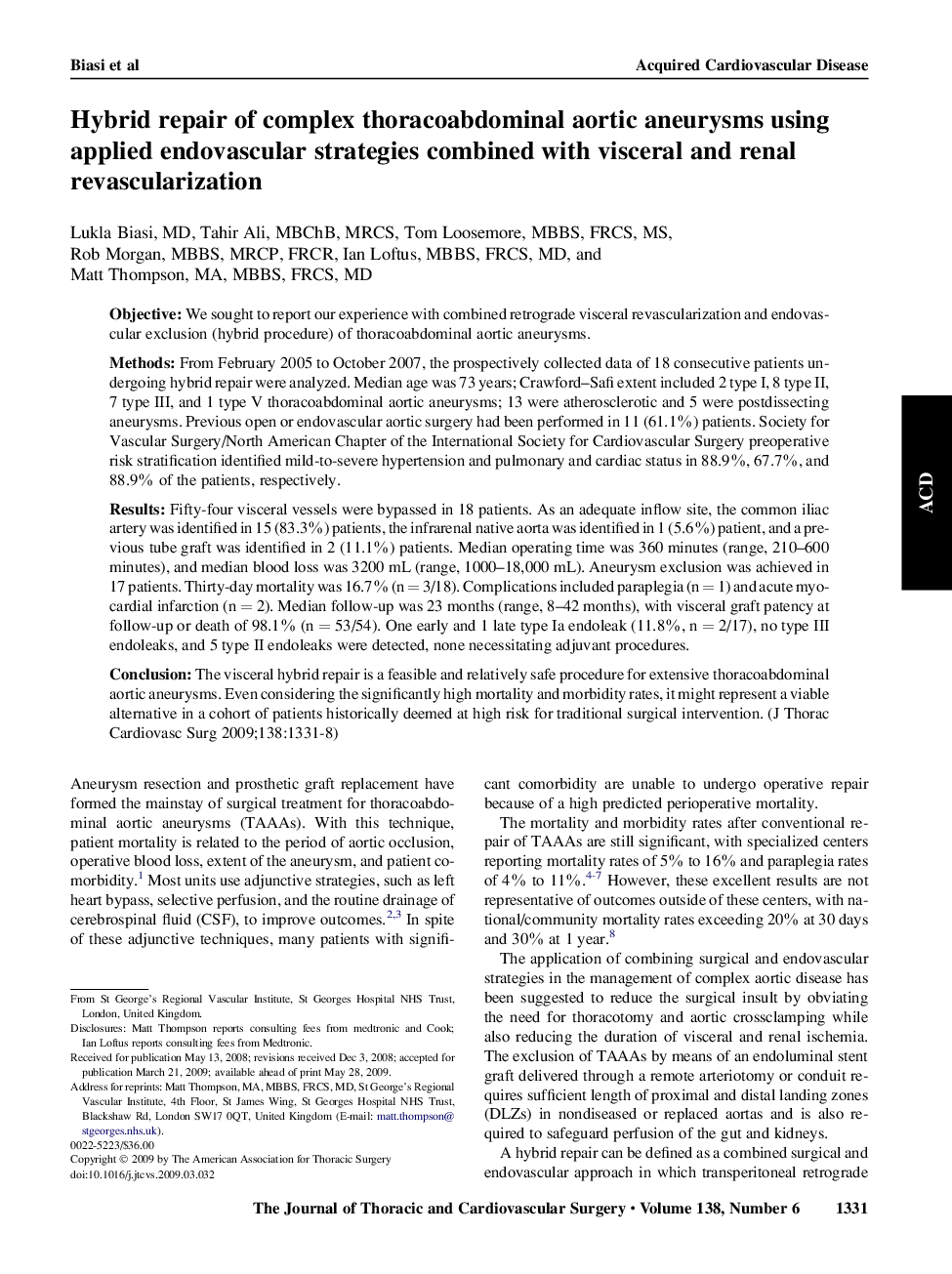| Article ID | Journal | Published Year | Pages | File Type |
|---|---|---|---|---|
| 2984948 | The Journal of Thoracic and Cardiovascular Surgery | 2009 | 8 Pages |
ObjectiveWe sought to report our experience with combined retrograde visceral revascularization and endovascular exclusion (hybrid procedure) of thoracoabdominal aortic aneurysms.MethodsFrom February 2005 to October 2007, the prospectively collected data of 18 consecutive patients undergoing hybrid repair were analyzed. Median age was 73 years; Crawford–Safi extent included 2 type I, 8 type II, 7 type III, and 1 type V thoracoabdominal aortic aneurysms; 13 were atherosclerotic and 5 were postdissecting aneurysms. Previous open or endovascular aortic surgery had been performed in 11 (61.1%) patients. Society for Vascular Surgery/North American Chapter of the International Society for Cardiovascular Surgery preoperative risk stratification identified mild-to-severe hypertension and pulmonary and cardiac status in 88.9%, 67.7%, and 88.9% of the patients, respectively.ResultsFifty-four visceral vessels were bypassed in 18 patients. As an adequate inflow site, the common iliac artery was identified in 15 (83.3%) patients, the infrarenal native aorta was identified in 1 (5.6%) patient, and a previous tube graft was identified in 2 (11.1%) patients. Median operating time was 360 minutes (range, 210–600 minutes), and median blood loss was 3200 mL (range, 1000–18,000 mL). Aneurysm exclusion was achieved in 17 patients. Thirty-day mortality was 16.7% (n = 3/18). Complications included paraplegia (n = 1) and acute myocardial infarction (n = 2). Median follow-up was 23 months (range, 8–42 months), with visceral graft patency at follow-up or death of 98.1% (n = 53/54). One early and 1 late type Ia endoleak (11.8%, n = 2/17), no type III endoleaks, and 5 type II endoleaks were detected, none necessitating adjuvant procedures.ConclusionThe visceral hybrid repair is a feasible and relatively safe procedure for extensive thoracoabdominal aortic aneurysms. Even considering the significantly high mortality and morbidity rates, it might represent a viable alternative in a cohort of patients historically deemed at high risk for traditional surgical intervention.
